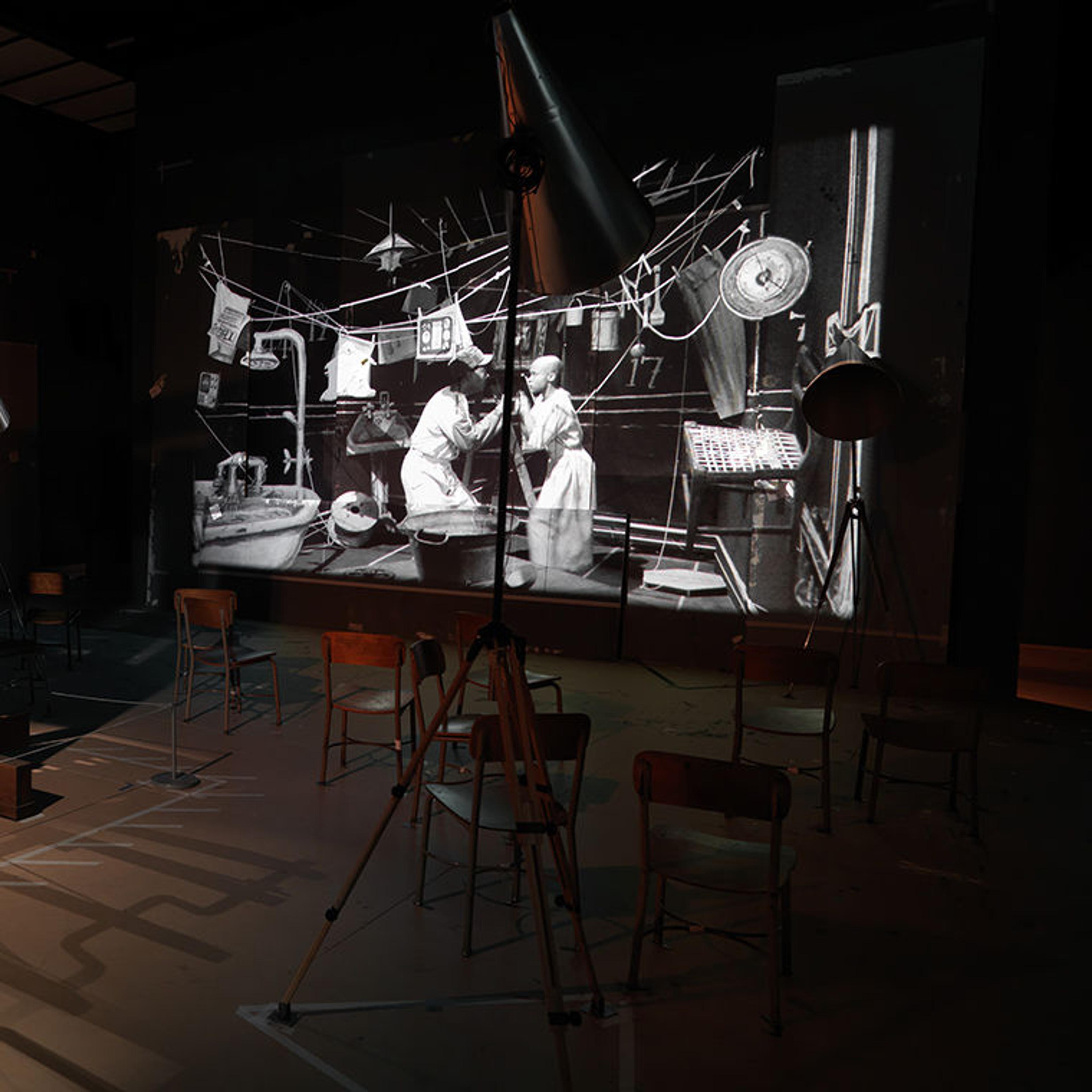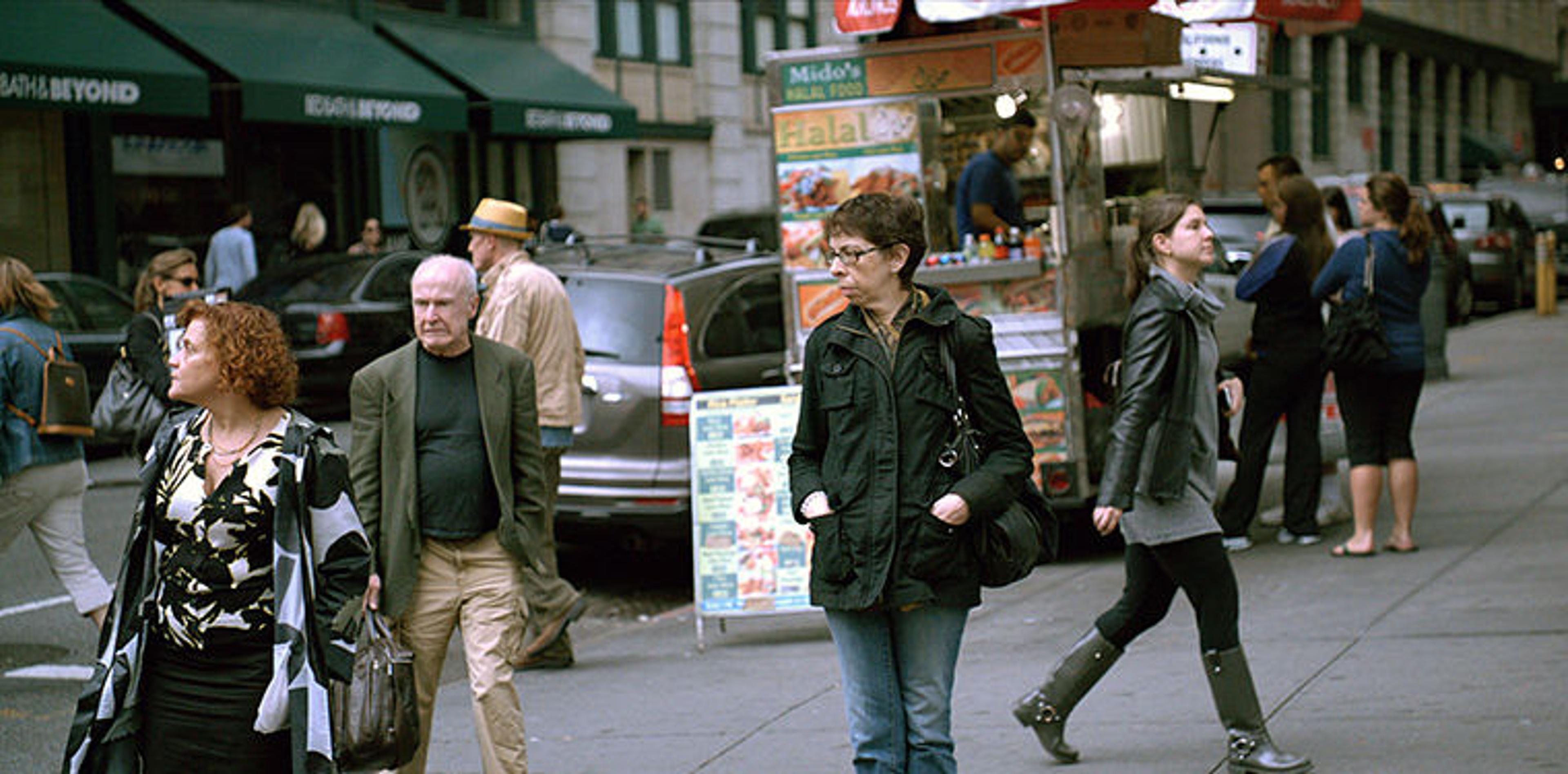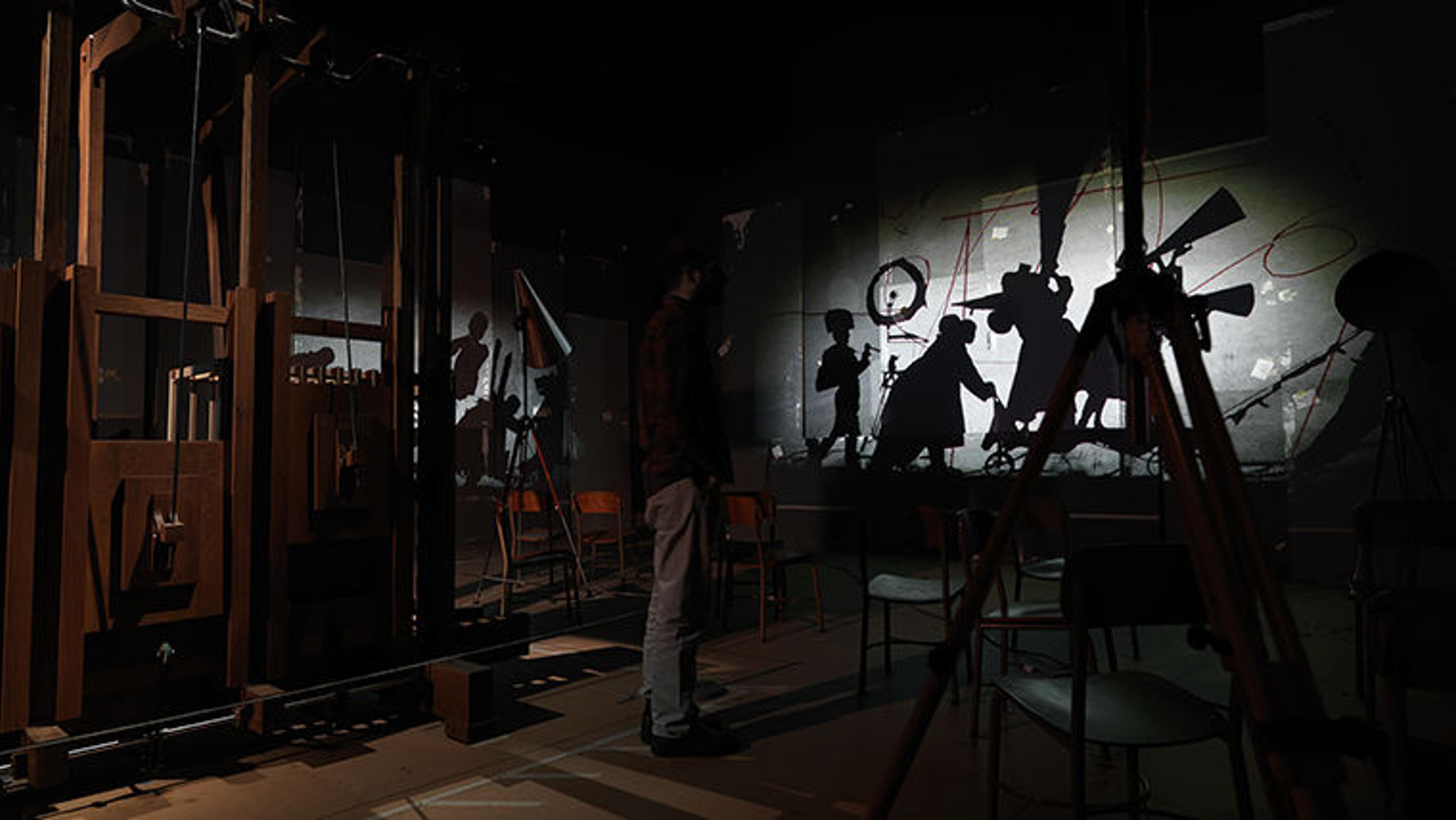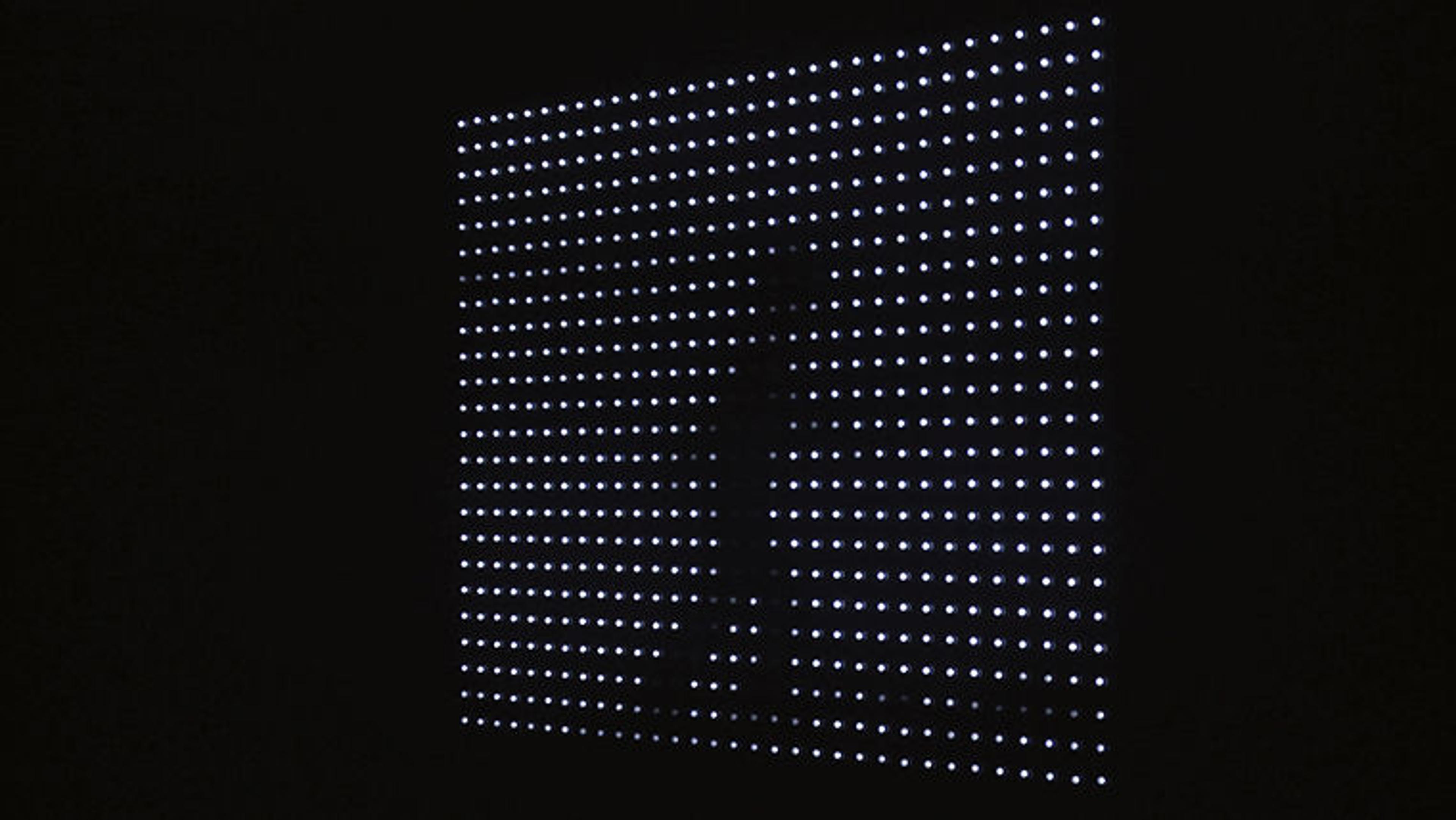
William Kentridge (South African, born 1955). The Refusal of Time, 2012. Five-channel digital video installation, black-and-white and color, sound, 30 min. Steel megaphones, and a breathing machine ("elephant"), dimensions variable. Jointly owned by The Metropolitan Museum of Art, New York, and the San Francisco Museum of Modern Art, 2013. Purchased for The Metropolitan Museum of Art with Roy R. and Marie S. Neuberger Foundation Inc. and Wendy Fisher Gifts and The Raymond and Beverly Sackler 21st Century Art Fund (2013.250). © William Kentridge. All rights reserved.
In 2001, a cross-departmental, collaborative group first began meeting to address the unique preservation and collection needs of time-based media, which are artworks that unfold over time. This group was formally established in 2010 as the Time-Based Media Working Group. Examples of time-based media include 35mm slide projections, video installations, artworks that use software and custom computer code, and even performance art. The Met currently has approximately 275 time-based media artworks in its collection.
Why does The Met need such a working group? Time-based media artworks have unique preservation and collection needs in comparison with traditional art media such as painting and sculpture.
For one, these artworks are variable in their display and may be presented in different manners depending on the gallery or situation in which they are exhibited. Extensive research and collaboration with living artists are necessary to determine the parameters for what constitutes a successful exhibition of the artwork. In addition, many time-based media artworks require obsolescent technologies such as slide projectors and cathode-ray tube televisions. While this equipment may be replaceable, it may also be in limited production, and there are few specialists with the skills to repair such things when they break.
Time-based artworks must be conserved just like any other artworks in the collection, and proper storage is essential. Any digital files must be duplicated and backed up on protected servers to preserve the data in these artworks.
Members of the working group include staff from eighteen different departments—including the Digital, Conservation, Registrar, Curatorial, Exhibitions, and Information Systems and Technology departments, as well as our Counsel's Office. The group meets regularly to discuss issues related to the acquisition, exhibition, and preservation of time-based media art at The Met.
Below, see a few examples of time-based media in The Met collection.
James Nares, Street (2011)

James Nares (British, born 1953), Street, 2011. Single-channel digital video, color, sound, 61 min., variable media. The Metropolitan Museum of Art, New York, Purchase, Vital Projects Fund Inc. Gift, through Joyce and Robert Menschel, 2012 (2012.573). © James Nares
To create Street (exhibited at The Met Fifth Avenue from March 5 through May 27, 2013, as the centerpiece of an exhibition by the same name), James Nares shot footage of a New York intersection using a specialized camera normally reserved for fast-moving subjects such as hummingbirds. The raw footage was then slowed down and combined with original music composed and performed by the artist's friend Thurston Moore, of Sonic Youth, resulting in a captivating, dream-like video. To accompany the video, the artist selected seventy-five objects from the Museum's collection for display in the exhibition. Objects selected included fragments of Roman marble statues dating from the first or second century AD, a sixteenth-century Chinese handscroll, and photographs by Walker Evans and Robert Frank.
William Kentridge, The Refusal of Time (2012)

William Kentridge (South African, born 1955). The Refusal of Time, 2012. © William Kentridge. All rights reserved.
William Kentridge's five-channel video installation with sound is an immersive experience incorporating custom sculptural elements. It was featured in a solo exhibition, William Kentridge: The Refusal of Time, between October 22, 2013, and May 11, 2014, soon after it was acquired jointly with the San Francisco Museum of Modern Art. Among schoolhouse chairs and vintage megaphones sits a large kinetic wooden "elephant" (or "breathing machine") that pumps air from custom bellows and cranks. Videos projected onto boards resting on the gallery walls portray a collage of animated drawings and live action scenes, with metronomes, clock faces, and other images referencing the scientific pursuit of defining the passage of time.
Jim Campbell, Motion and Rest #2 (2004)

Jim Campbell (American, born 1956). Motion and Rest #2, 2002. Light-emitting-diodes (LED) and custom electronics, 22 x 28 x 1 in. (55.9 x 71.1 x 2.5 cm), variable media. The Metropolitan Museum of Art, New York, Purchase, Henry Nias Foundation Inc. Gift, 2004 (2004.105). © Jim Campbell
Light artist Jim Campbell's Motion and Rest #2 (exhibited at The Met Fifth Avenue from February 23 through April 29, 2007, in Closed Circuit: Video and New Media at the Metropolitan) is a software-based artwork using custom computer hardware mounted to a black panel with hundreds of white-frosted LED lights that together create moving images of a disabled individual walking. Inspired by Eadweard Muybridge's nineteenth-century stop-motion photography, Campbell's work presents the figure in the negative space created when the LED diodes flicker on and off. Closed Circuit was The Met's first multiartist exhibition dedicated solely to video and new-media artworks.
Learn more about the Time-Based Media Working Group and The Met's collection of time-based media art, including recent acquisitions, upcoming events, and a list of related resources.